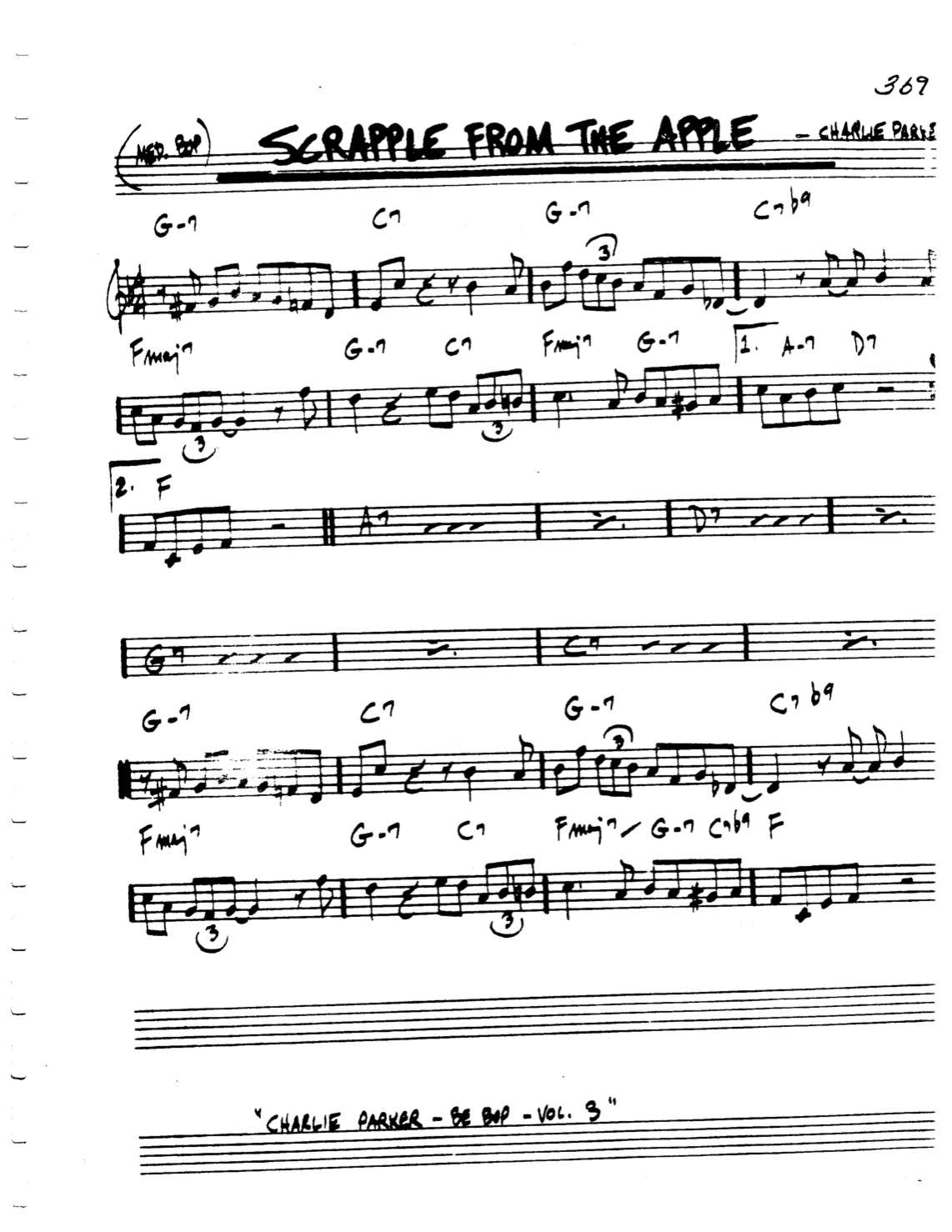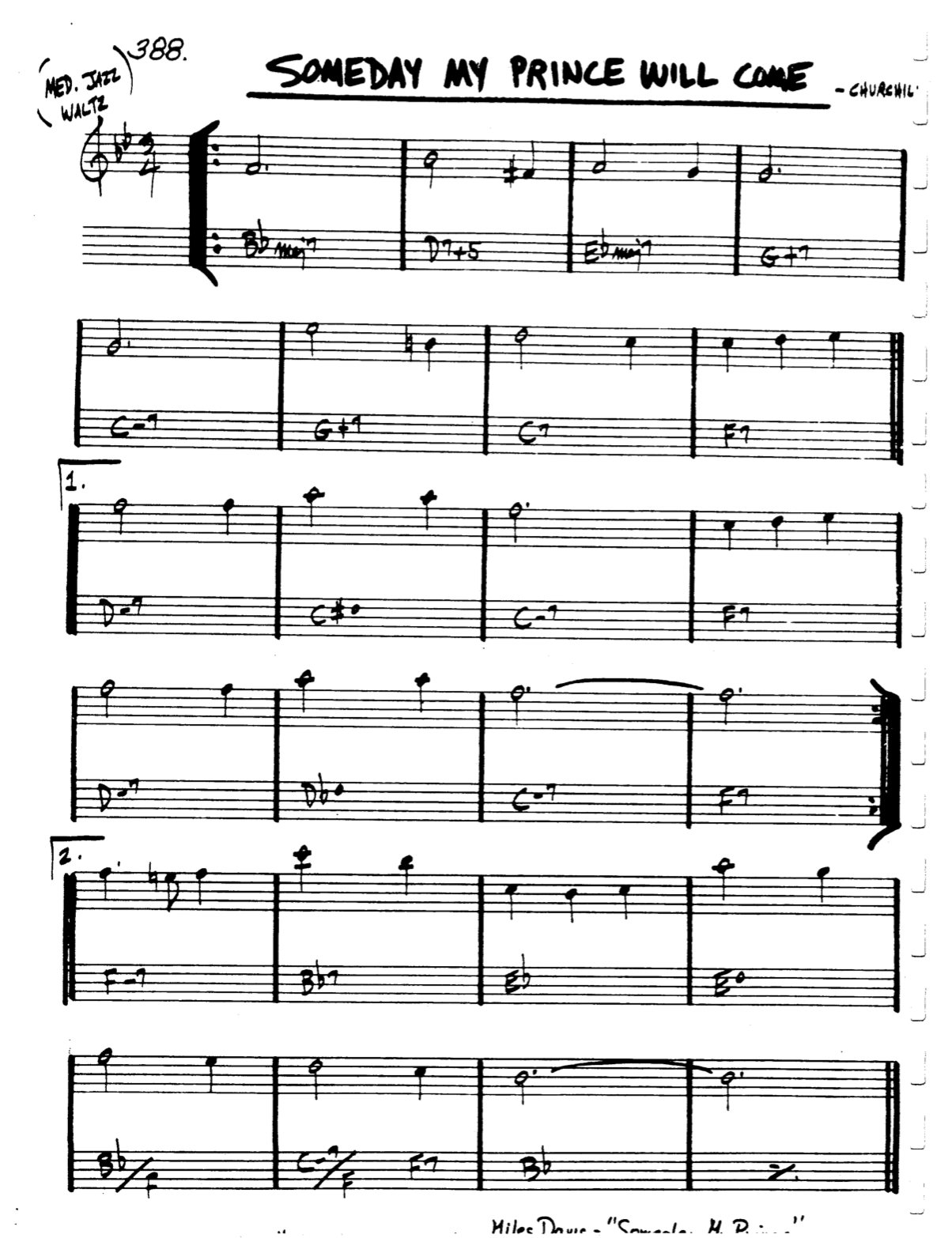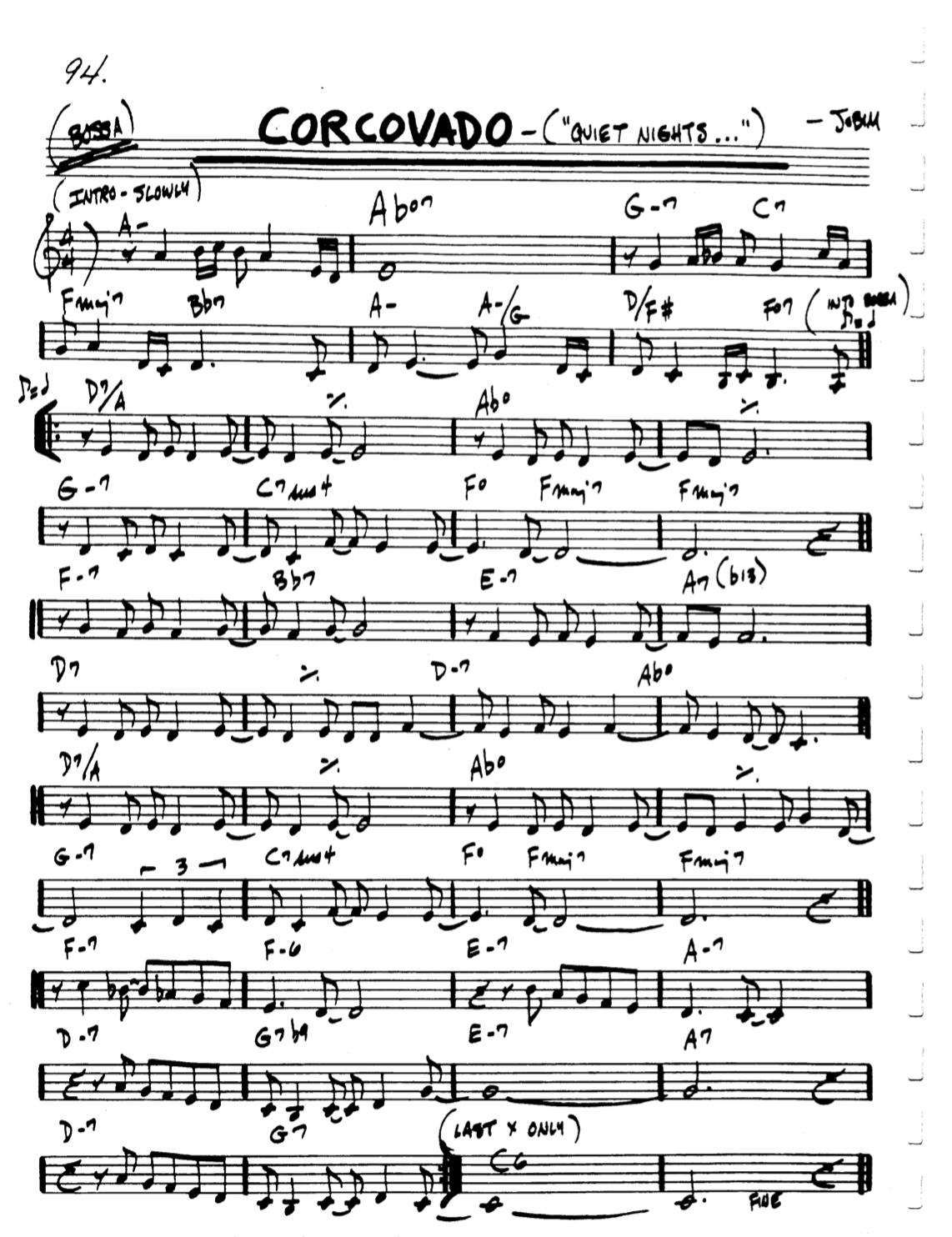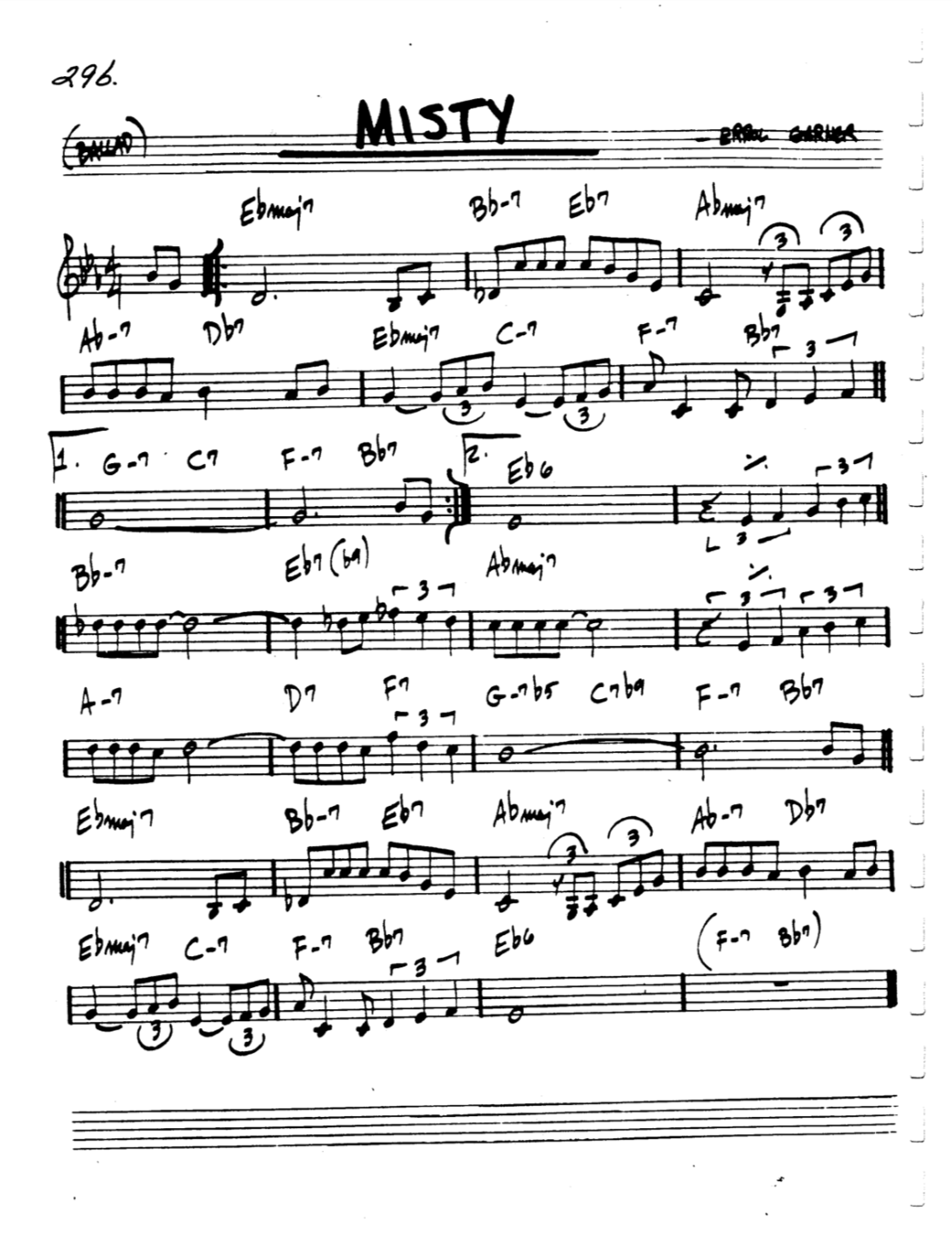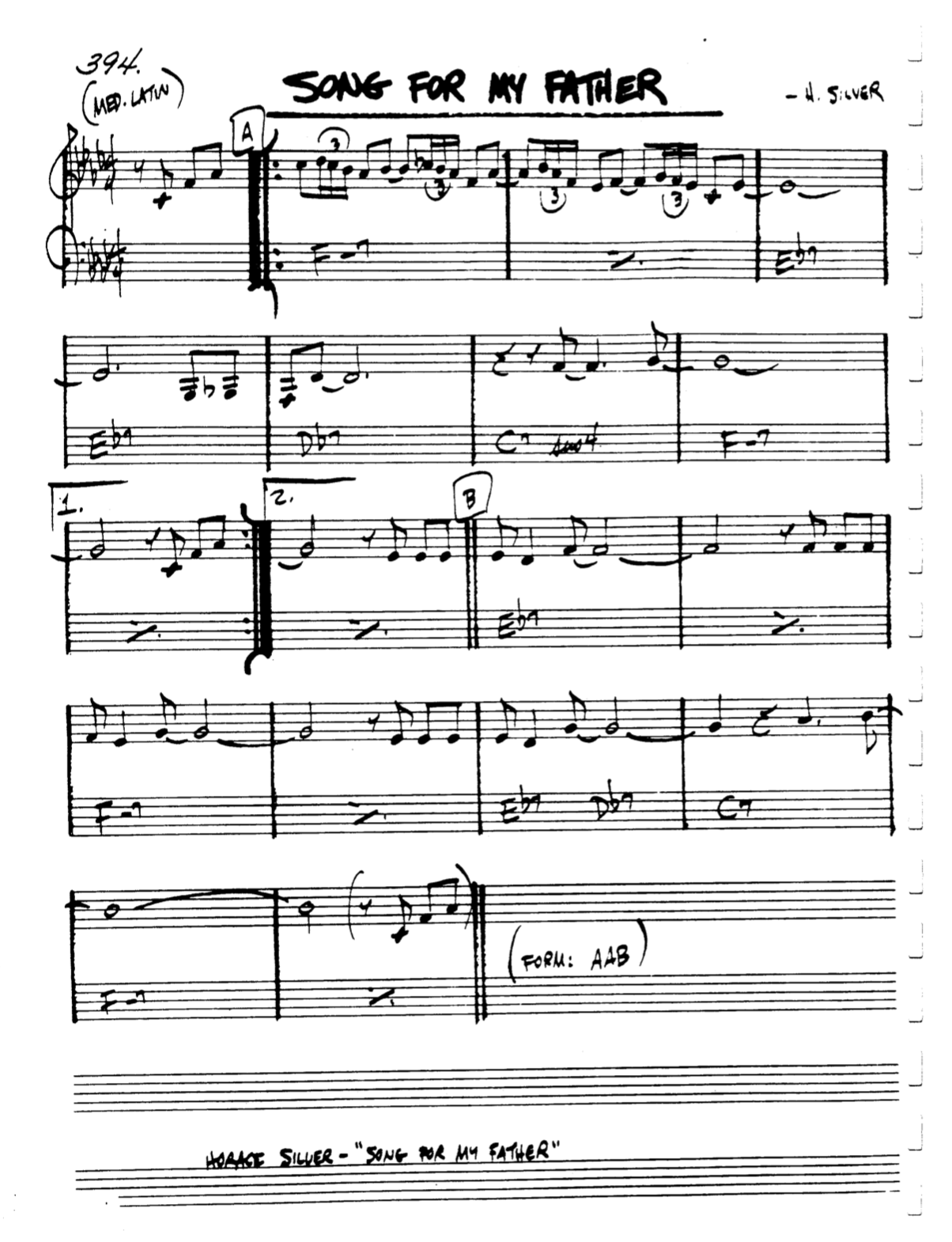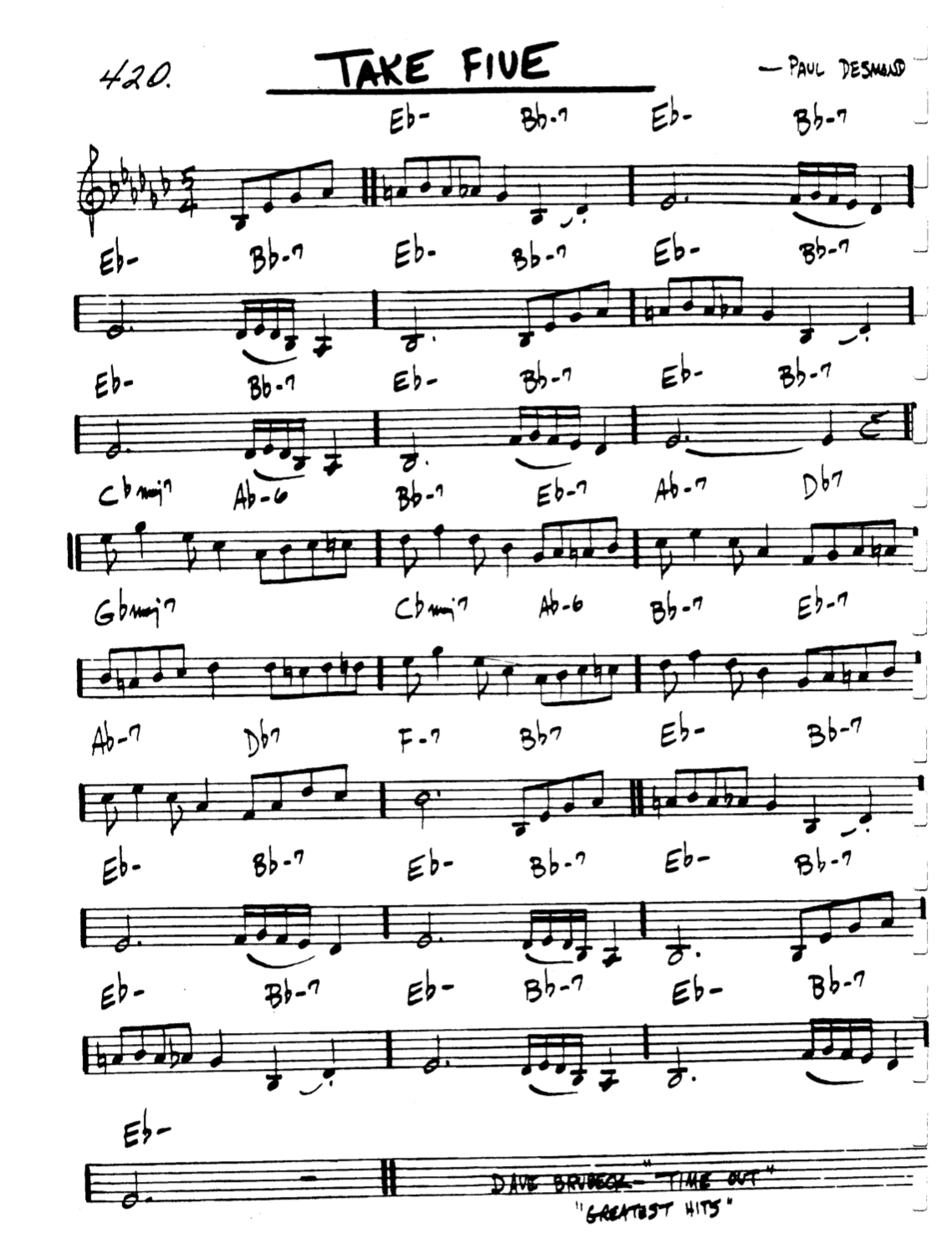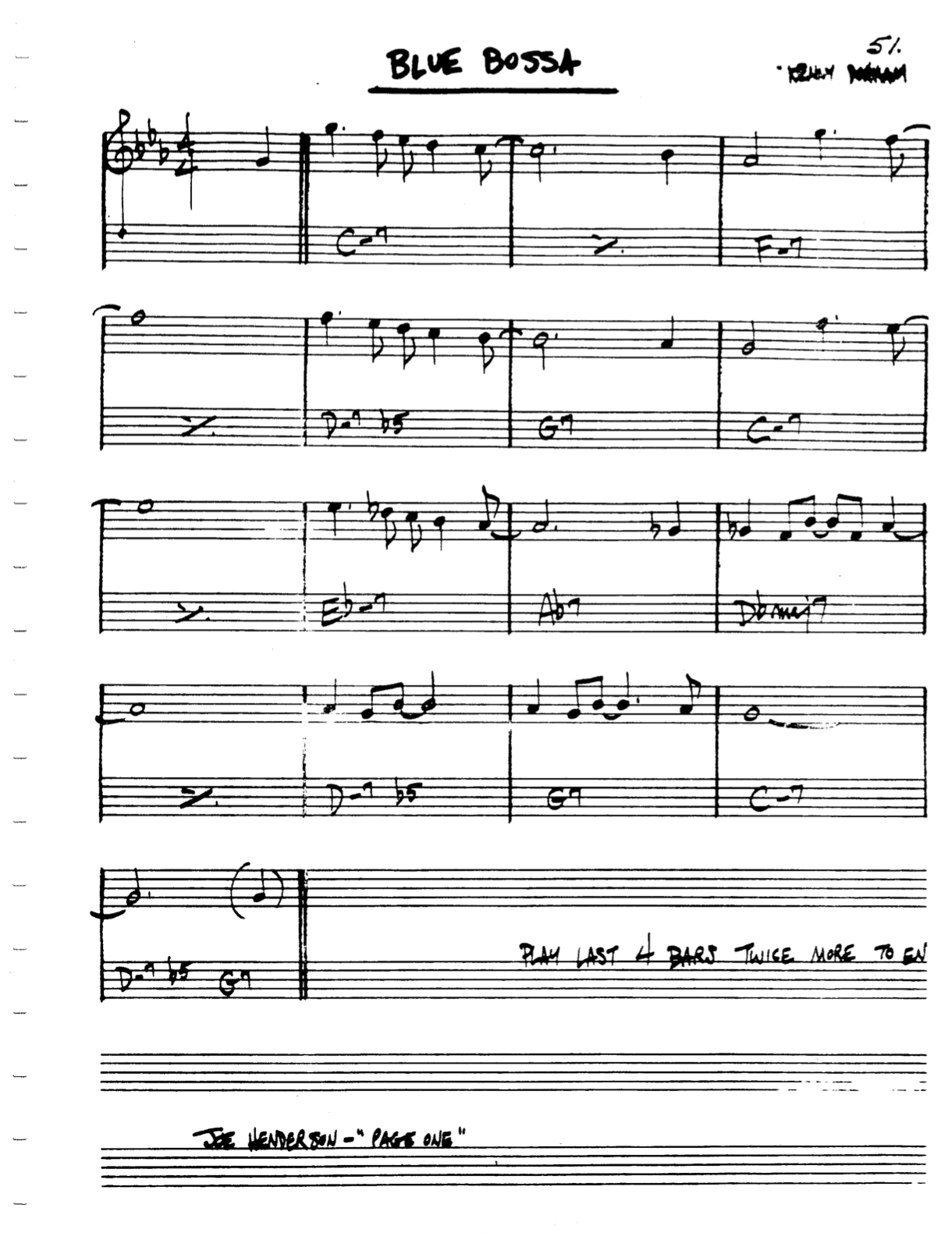If you’re looking for the Scrapple From The Apple Lead Sheet, you’ve made it!
We’ve shared the Scrapple From The Apple Lead Sheet in pdf form, so that it’s very easy for you to open and download the file.
Originally written by Charlie Parker, Scrapple From The Apple is another one of those classic jazz standards you’ll definitely learn about it.
To be quite honest, I’ve never ever performed Scrapple From The Apple. I’ve seen it being brought into a small jazz band setting and be suggested to play, but for some reason, even though I know that it is a super fun song, I never really performed it.
To be honest, I didn’t know much about the harmony until I saw the lead sheet, and I was nicely surprised that the bridge kind of reminds me of I’ve Got Rhythm, by gershwin.
Nonetheless, my favorite version of Scrapple From The Apple is the version as performed by Charlie Parker.
For some reason, almost every rendition of any song Charlie parker ends up doing sits really well with me.
Eventhough Charlie Parker was really well known as a bebop player, and this theme of Scrapple From The Apple is somewhat bebop, the solos on their recording wasn’t really bebop-ish.
Now, as with anything and any jazz standard we do, it’s time to analyze the song and see what we can do to improve our improvisation on the harmony and chord progression of the song.
Learning and Mastering The Scrapple From The Apple Lead Sheet
First of all, the very first step I take when I look at a brand new lead sheet, in this case the Scrapple From The Apple Lead Sheet, is that I look at what key the song is in.
So, by the looks of it, we are in the key of F major. How do I know this? Because of the Bb at the beginning of the staff line, and the fact that the tonal center is F and that the song ends on F Major.
How do I know this?
When I look at the 2 5 1 chord progressions – and there are a good amount of them, most of them are G- to C7 to F, and that is a classic 2 5 1 in the key of F major.
All of this information is very useful, because now I can move on and see what chords are not in the key.
So, besides that fact that for every Dominant chord I will be playing its altered scale version and therefore will be going outside of the key already, let’s look at some of the other chords.
We have a D7 chord, which acts as a secondary dominant of the 2nd degree, which it resolves to as well in this lead sheet.
We also have a G7 in the bridge, which is a secondary dominant of the 5th degree as it resolves to the C7 chord, which in this case does not end up resolving to the 1 chord, which is fine because it eventually does resolve to the 1.
Now that I know all of these things I have to determine the choices that I’m going to make soloing wise.
Am I only going to play altered scales on my dominant and secondary dominant chords? Or am I going to throw in a dominant lydian scale or dominant b13. If so, does it sound good? Does there need to be something happening more harmonically in order to make any other scale work?
In general, you can never go wrong with the altered scale.
I myself even alter the already altered scale. Instead of playing and using all of the notes of the altered scale, I often times leave out the 5th note of the scale?
Why?
Because to me the 5th note sounds like the weakest link, and when I omit it I get way more creative with patterns and passages. Give it a try yourself!
How to practice?
The next and final step – after you’ve determined and understand the harmony – is to actual practice the song.
Like I always say, memorizing the melody first on your instrument is crucial, no matter what instrument you play.
If you play a rhythmic instrument, focus on the rhythmic aspect.
Next, you memorize the harmony so that you can play solos without really focussing on anything else besides your instrument.
Now, once you’ve memorize the harmony, it’s time to apply the scales and arpeggios of the correct harmony.
Often times what I do myself is I make sure that I only practice soloing between 2 chords each. So with that being said, I would practice transitioning first between the G-7 or G dorian is the scale that I came up with, resolving to the C7 altered scale, and making sure some of the patterns that I came up with really resonate and showcase the harmony through my solo lines even.
Once that happens, I add the next chord, and the next chord and the next chord, until I am fully practicing the entire chord progression of the standard.
Keep in mind, when you practice things in very small steps, they will sink into your brain faster and will actually be able to be processed better and faster.
The last thing that I’d like to add as final step to practicing and mastering the song is that once you’ve done all of these steps, you have to take your instrument and go out there and apply your knowledge to practicing in front of an audience or jam session.
The nerves that come with that really play a big part, because if you feel like you can play really well in your room, but then it all goes away once you stand on stage, that would truly be a shame.
So once you’ve completed all of these steps, apply it in a jam session and practice the jazz standard there!
Once you’ve done that, please let me now how it went and if my advice really did something for you.
Final Thoughts.
Las but not least, jazz is suppose to be fun, but can sometimes be a really challenging genre, especially when you’re first starting out.
I just wanted to give a recommendation real quick to anyone who is looking to advance their skill further.
Make sure that you know all of your chords, scales and arpeggios in every key, no matter what instrument you play (unless you play the drums of course).
However, this will really make it so that you understand the language of jazz as an actual language, rather than it being just another mystery..
Also, I would like to ask that anyone who is visiting our website, that they leave a comment in the comment section down below and a rating in our rating section down below.
All of this information helps us out tremendously as we are trying to figure out what it is we can do to increase the user experience for our visitors, and truly, that can only be determined by you guys, the visitors.
Also, if you like the Scrapple From The Apple Lead Sheet that we have shared, feel free to share our website with friends and family on social media platforms so that people can start to learn more about us.
Also, last but not least, if there happens to be a jazz standard or chord progression, sheet music, real book chart or classical chart that you are looking for but for some reason can’t find because it is very difficult to locate, let us know and we will most definitely help you locate it!
We want to thank you for visiting or website and don’t forget that you can use the search box in the menu bar at the top to search for any song you’d like to find, along with trying to find an artist or composers track.
We hope you have a wonderful rest of your day and can’t wait for you to revisit our site! Just so that you know, we add new jazz standards to our website every single day, so by the time you get back our library will have expanded even more and will have taken in even more and more sheet music and pdf files.
We will always strive to become the best and most trustworthy file sharing and knowledge sharing platform there currently is on the planet.
